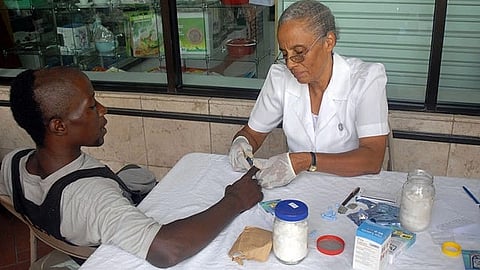Type 1 diabetes patients face an ongoing threat of hyper- or hypoglycemia. A precise and consistent release of insulin could enhance the control of their blood sugar levels. Recently, a team of researchers published a paper in Angewandte Chemie, presenting a new type of insulin formula that can be activated by glucose. By utilizing lipid nanoparticle carriers, the insulin can be released in varying amounts, based on the current blood sugar level.
The regulation of insulin levels in our bloodstream is primarily carried out by the β-cells located in the pancreas, and this regulation is reflective of changes in blood glucose levels. Patients with type 1 diabetes, however, may produce minimal or no insulin, and must undergo several daily injections of fast-acting insulin, as well as one or two injections of long-acting insulin to maintain normal blood sugar levels. Alternatively, some patients may use an insulin pump that offers continuous infusion. Unfortunately, these insulin formulations are incapable of responding to changes in blood glucose levels, which makes it difficult to achieve precise blood sugar regulation. This situation increases the risk of acute, life-threatening hypoglycemia in cases of an insulin overdose, missed meals, or inadequate carbohydrate intake before strenuous physical activity.
Incorporating glucose-responsive insulin formulations that replicate the function of β-cells could potentially enhance insulin therapy. However, previous approaches utilizing insulin "carriers" made from polymers, which contain glucose oxidase as a glucose sensor, have encountered two significant issues. Firstly, the molecular weight of the polymer carriers is not consistent, which results in unpredictable insulin release. Secondly, the release of glucose oxidase into the body can be toxic, posing a safety concern.
To address these concerns, a research team from Zhejiang University, Zhejiang Cancer Hospital, and the University of Hong Kong, led by Jinqiang Wang and Zhen Gu, opted for a distinct approach. They utilized biocompatible lipid nanoparticles as carriers, containing lipids that have uniform chemical structures. This approach is especially noteworthy since lipid nanoparticles are already commonly used as drug carriers in clinical settings.
As a part of their approach, the researchers modified a portion of the lipids to incorporate many positive charges onto the surfaces of the self-aggregated nanoparticles. Insulin molecules, which typically carry a negative charge, are then electrostatically attracted to the nanoparticles and are slowly released when the blood sugar level is normal. However, if the blood sugar level increases, specific lipids in the nanoparticles form chemical bonds with the glucose molecules, reducing the positive charge on the surface of the nanoparticles. This alteration leads to a significant acceleration in the release of insulin. When tested on diabetic mice, the new insulin formulation was able to maintain normal blood sugar levels for up to six hours. Additionally, when glucose was administered, the blood sugar levels in the treated diabetic mice decreased as quickly as it did in healthy mice.
In the future, the amalgamation of this glucose-sensitive insulin composition with a dispensing apparatus managed by a wearable electronic glucose sensor could considerably ameliorate blood glucose regulation in diabetic patients. (PB/Newswise)


